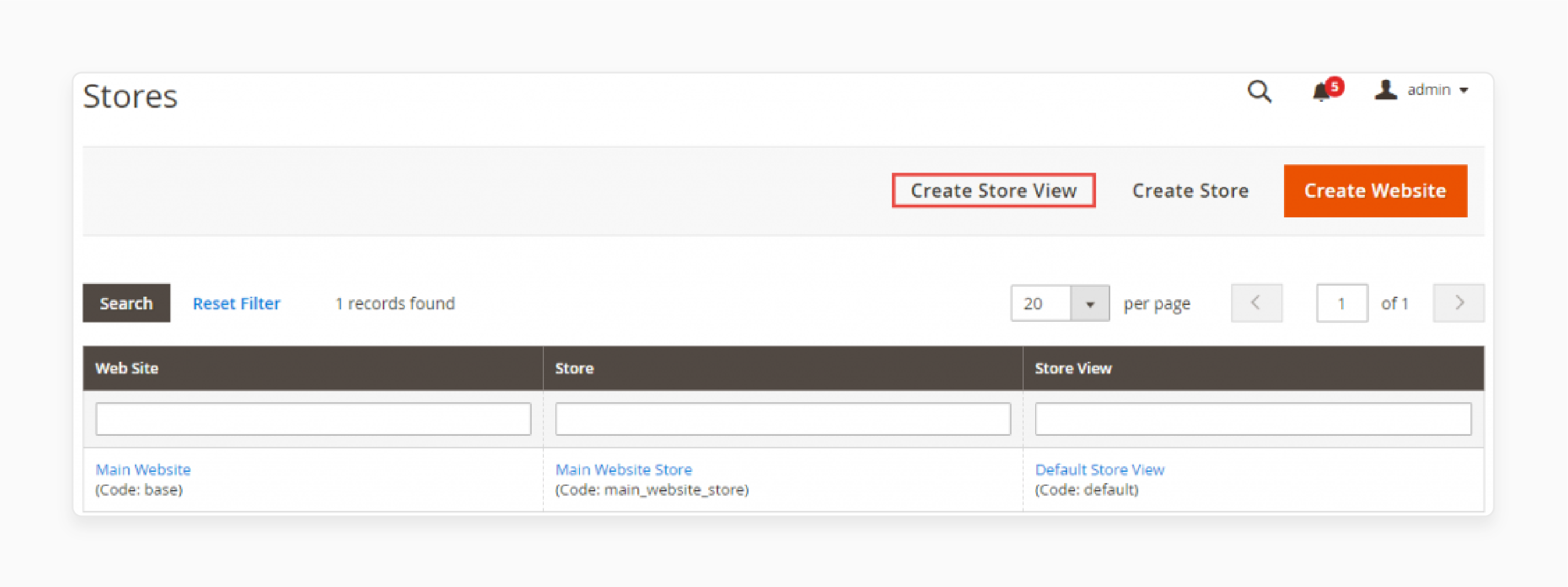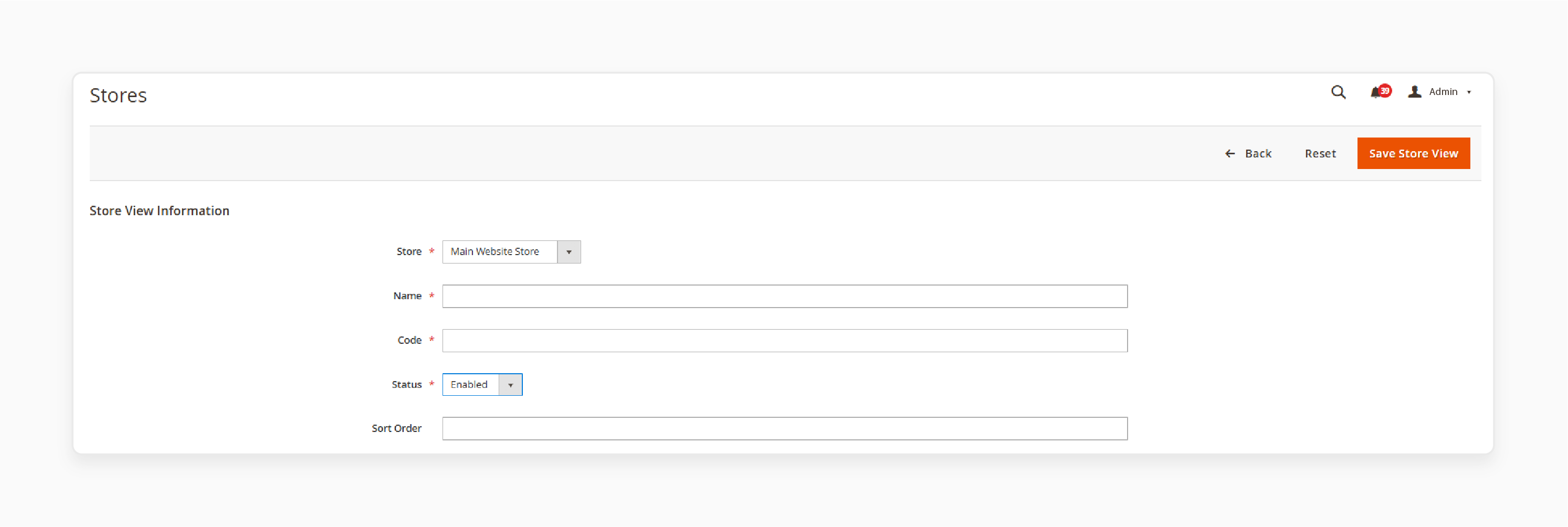
Magento 2 Language Packs: Installation and Working
Did you know that 75% of consumers prefer to buy products in their native language? Magento 2 language packs offer a smooth shopping experience in various languages.
The tutorial explores the features and steps to install Magento 2 language packs.
Key Takeaways
-
Features of language packs support customization and multilingual support.
-
The packs operate behind the scenes, utilizing local settings and CSV files.
-
Trusted sources, such as GitHub and Crowdin, help identify high-quality language packs.
-
Follow the steps to install language packs through the Admin Panel or Command Line.
-
Compare free and paid language packs to determine which option best suits your needs.
What Are Magento 2 Language Packs?
Magento 2 Language Packs
Seamless multilingual experiences with comprehensive translation modules for global eCommerce success
Core Features
Installation Methods
Web Setup Wizard for GUI installation
Direct CLI installation with Composer
Ready to Go Global?
Transform your Magento store into a multilingual powerhouse with professional language packs
Magento 2 language packs are translation modules. It allows merchants to localize their storefront and admin panel into different languages.
Each pack targets a specific locale, such as French or German. These include CSV files with key-value translation pairs. They replace the default English text with translated strings. It enhances the shopping experience for international customers.
Install these packs via Composer or add them to the app/i18n directory. Once installed and enabled, they reflect across the entire Magento interface. It includes product pages and backend settings.
Language packs are essential for global eCommerce. It helps businesses serve diverse markets without the need to develop separate stores.
Many are open-source and community-maintained. It makes them easy to update and customize as per regional requirements.
7 Key Features of Magento 2 Language Packs
1. Locale-Based Translations
-
Tailor each language pack to a specific locale, such as fr_FR for French or de_DE for German.
-
When a store's locale is set to match the language pack. Magento replaces the default English text with the localized equivalents. It is across both the frontend and backend.
2. CSV-Based Translation Files
-
Manage translations through i18n/*.csv files. It contains simple key-value pairs, such as original phrases and their translated versions.
-
The format makes it easy to add or override specific strings. There is no need to change the core Magento code.
3. Composer & Manual Installation Support
-
Install Magento 2 language pack via Composer or upload files to the
app/i18ndirectory. Create a store view and set the correct locale in the admin panel. Deploy static content and verify translations on your site. -
The flexibility supports various workflows. It enables quick localization in both development and production environments.
4. Supports Multi-Language Store Views
-
Magento allows the creation of various store views, each with its language pack. This enables merchants to offer region-specific experiences.
-
These include translated product descriptions and tailored checkout messages. All can be from a single Magento installation.
5. Admin Panel & Frontend Coverage
-
Language packs don't translate the customer-facing pages. They also localize the Magento admin panel.
-
It is particularly useful for non-English-speaking staff or store managers. It improves usability and reduces training time.
6. Community-Driven & Open Source
-
The Magento open-source community creates and maintains many language packs. It is via platforms like GitHub and Crowdin.
-
It means better quality translations and collaboration across native speakers worldwide.
7. Customizable & Extensible
-
Merchants can override any translation string. It is by adding a custom i18n/*.csv in their theme or module.
-
It is especially helpful for adapting language to local dialects or brand-specific wording. They don't affect future updates to the core pack.
How Language Packs Work in Magento 2?
1. Locale Configuration in Store View
-
Magento 2 supports multi-language, multi-store views under a single installation. It allows you to run one website with different localized versions. Assign a specific locale to each store view to enable the correct language.
1. Go to Admin Panel → Stores → Configuration → General → Locale Options
2. Select the specific store view
3. Choose the appropriate Locale
-
Once you select a locale, Magento starts looking for a matching language pack. It helps serve translations for the storefront and admin panel. It helps display translated content across the site.
2. Structure of a Language Pack
Magento 2 language packs adhere to the standard module structure. Install it via Composer or place it in the app/code directory. The key components include:
-
Registration.php registers the language pack as a Magento module
-
The composer.json file declares the package name and dependencies.
-
i18n/<locale>.csv is the core translation file. It contains translation mappings in this format "Original String", "Translated String".
3. Apply Translations
Magento uses its \Magento\Framework\Phrase\Translator class to:
-
Identify text strings wrapped in the __() function
-
The system scans the active language pack's i18n/locale.csv for a matching translation.
-
It replaces the original string with the translated version during rendering.
It applies to:
-
Storefront elements, such as buttons or error messages
-
Admin UI text, such as menu items or configuration fields
-
Emails and transactional templates
4. Fallback & Priority
Magento has a fallback mechanism. It helps ensure site continuity even if Magento doesn't find a translation:
-
If a phrase isn't found in the current language pack, Magento falls back to the default English string.
-
If various language packs or translation sources exist. Determine priority by proximity to the active module or theme. Custom modules or themes with i18n/<locale>.csv will override global translations.
You can also override translations by:
-
Placing a custom CSV file in your theme: app/design/frontend/Vendor/theme/i18n/fr_FR.csv
-
Creating a new module with an i18n folder and overriding values.
5. Activation & Caching
-
After adding or editing a language pack. Instruct Magento to activate a new or modified language pack:
1. Run php bin/magento setup:upgrade
2. Deploy static content if needed: php bin/magento setup:static-content:deploy fr_FR
3. Clear cache php bin/magento cache:flush
Where to Find Magento 2 Language Packs?
1. Magento Marketplace
-
The Magento Marketplace is the most trusted source for verified language packs.
-
You can search for language-specific extensions under the "Languages" category. Filter them by keywords like:
1. French
2. German
3. Spanish
4. Italian
5. Dutch
Key Benefits:
-
Curated and vetted by Adobe.
-
It often includes vendor support.
-
Supports one-click installation using Marketplace credentials.
2. GitHub
-
Many Magento developers host open-source language packs on GitHub. These repositories are free to download and often include updates from native speakers.
-
Use queries like:
Magento 2 language pack site:github.com
or
Magento 2 French language pack GitHub
Key Benefits:
-
It is free and transparent.
-
You can fork and customize them.
-
It is ideal for developers and custom project workflows.
3. Composer & Packagist
-
Magento 2 supports Composer-based installation. You can find many language packs hosted on Packagist.org. It is the default Composer package repository.
-
Search for your language on Packagist. Note the Composer package name.
Key Benefits:
-
Fast installation.
-
Integrates into CI/CD workflows.
-
Tracks versions for updates.
4. Crowdin
-
Magento used Crowdin for collaborative translation projects. It enabled developers and contributors from around the world to collaborate. They translate Magento into various languages.
-
Though Adobe has scaled back its use, many packs were born here. Contributors still maintain these.
Key Benefits:
-
You can download translations in progress.
-
Contribute as a community member.
-
Access regional variants and dialects.
5. Premium Themes & Extension Bundles
-
Some theme developers include language packs as part of their package offerings.
-
If you are using themes like Porto or Hyvä theme, please refer to their documentation. Include language packs.
Where to Look:
-
Inside the theme's i18n folder.
-
Documentation or installation guide.
-
Themeforest product page or user reviews.
2 Methods to Install Magento 2 Language Packs
Method 1: Via Admin Panel
1. Navigate to Admin Panel → System → Web Setup Wizard → Component Manager.
2. Locate and install the language pack you have selected on Magento 2.
3. Go to Stores → Settings → All Stores.
4. Click Create Store View.

5. Enter required details, such as Store, Name, Code, and Sort Order.
6. Set Status to Enabled.

7. Click Save Store View.
8. Navigate to Stores → Configuration → General → Locale Options.
9. In the Store View dropdown, select your new store view.
10. Uncheck the Use Website for the Locale field.
11. Choose the appropriate language.

12. Click Save Config.
Method 2: Via the Command Line
1. Log in to the Magento server as the system file owner
2. Navigate to your Magento 2 root directory
3. Run the following commands:
php bin/magento setup:upgrade
php bin/magento setup:static-content:deploy de_DE
Free vs Paid Magento 2 Language Packs Options
| Feature | Free Language Packs | Paid Language Packs |
|---|---|---|
| 1. Cost | It is completely free to use. | It ranges from \$29 to \$200+, depending on features and support. |
| 2. Source & Availability | It is available on GitHub and Magento Forums. | It is available through premium vendors, such as Mageplaza and custom translation firms. |
| 3. Translation Quality | It is community-contributed. It may include partial or inconsistent translations. | Native speakers translate it. These are accurate and polished. |
| 4. Frontend Coverage | These include basic storefront UI text, such as buttons and messages. | These cover storefront elements, including category and checkout. |
| 5. Support & Maintenance | There is no guaranteed support. It offers community help. | They offer vendor-provided support and issue resolution. |
| 6. Update Frequency | It depends on community contributions. These may be irregular. | It offers regular updates aligned with Magento release cycles. |
| 7. Customization Flexibility | It is editable via CSV and can be overridden. | It offers limited customization by license or vendor-specific tools. |
| 8. Integration Method | Manual installation or install it via Composer. | It is often bundled with premium themes. Deploy them using vendor-specific installers. |
| 9. Best Use Case | The use cases include small businesses and multilingual experimentation. | These include enterprise-grade stores and production environments. |
FAQs
1. Why is not all my content translated after installing a language pack?
Language packs only translate system text and interface elements. Custom content, such as product descriptions, requires manual translation or extra extensions. These help handle custom content translation.
2. Can I use various language packs?
Magento 2 supports various language packs through different store views. You can create separate store views for each language. Assign the appropriate language pack to each one. It allows customers to switch between languages.
3. How do I translate custom modules and themes?
Custom modules and themes need their translation files. Create CSV files with translations in the module's i18n directory. Use translation extensions that can handle custom content. Third-party modules may need manual translation or compatible language pack extensions.
4. What is the difference between free and paid language pack extensions?
Free packs offer basic translations for common languages. These may have incomplete coverage and limited support. Paid extensions provide professional translations and comprehensive coverage.
5. Do language packs affect store performance?
Language packs can impact performance if not optimized. Use static content deployment for specific languages. Consider using CDNs for multilingual stores. Regular maintenance and optimization help maintain performance across various languages.
Summary
Magento 2 language packs enable the translation of both frontend and backend content. The tutorial explores the key points of the modules, including:
-
Support locale-based translations using simple CSV key-value pairs.
-
Enable multilingual store views within a single Magento installation.
-
Offer full coverage across the storefront, admin panel, and emails.
-
They are customizable, open-source, and often maintained by the community.
Speed up your store setup with smooth language integration using managed Magento hosting.



